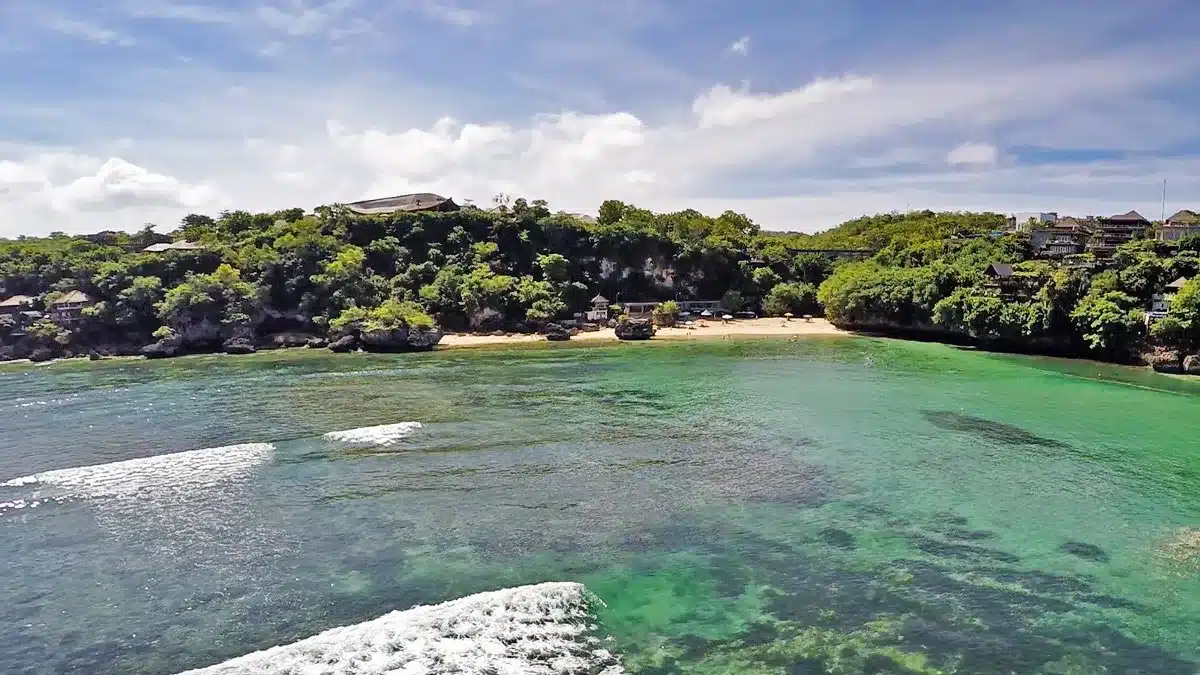West Bali National Park:
Key Takeaways
- Biodiversity Haven: West Bali National Park is a sanctuary for a wide array of wildlife, including over 160 species of birds. It is particularly renowned as the refuge of the critically endangered White Bali Starling, the only endemic vertebrate species of Bali.
- Varied Ecosystems: The park spans a total area of 19,002.89 hectares, encompassing diverse habitats such as rainforests, dry savannas, acacia scrubs, lowland and montane forests, and dense mangrove forests. It also includes marine habitats with protected beaches and offshore coral reefs.
- Conservation Efforts: The park was established primarily to protect the Bali Starling. Despite ongoing captive breeding and re-introduction efforts, poaching remains a significant threat. The park is also home to several endangered plant species, highlighting the importance of its conservation role.
- Tourist Attraction: The park is popular with nature lovers, birdwatchers, and diving enthusiasts. The coral reefs surrounding Menjangan Island, part of the park, are awe-inspiring, making it a favourite spot for divers. Visitors are required to check in at one of the two park offices for information, permits, and guide arrangements.
A Haven of Natural Splendor
Situated on the westernmost tip of the enchanting island of Bali, the West Bali National Park is a verdant sanctuary teeming with diverse wildlife and breathtaking landscapes. Lush forests, majestic mountains, sparkling blue waters, and pristine beaches characterise this sprawling reserve. It is particularly renowned as the refuge of the exotic White Bali Starling, an endemic bird species that has become an emblem of Bali’s rich biodiversity.
Geography and Habitat
The West Bali National Park occupies the entire Prapat Agung Peninsula, extending to Gilimanuk, Cekik, and Banyuwedang towns in the Jembrana and Buleleng regencies. The park is approximately 100 kilometres from Denpasar, Bali’s capital, and about 50 kilometres west of Singaraja, the capital of Buleleng Regency.
The park spans a total area of 19,002.89 hectares, encompassing 15,587.89 hectares of land and 3,415 hectares of marine habitats. The terrestrial landscape is a mosaic of rainforests, dry savannas, acacia scrubs, and lowland forests, with montane forests in the higher regions. Dense mangrove forests are also scattered throughout the park. The park’s northern section features the Prapat Agung Peninsula, which is flanked by protected beaches and offshore coral reefs. The small offshore island of Menjangan, a popular diving destination, is also part of the park.
The Exotic White Bali Starling Sanctuary
The park is a haven for birdwatchers, with 160 bird species recorded, including the critically endangered Bali Starling (Leucopsar Rothschild), Bali’s only endemic vertebrate species. The establishment of the national park in 1941 was primarily to protect this iconic bird. By 2001, only six individual starlings were believed to have survived in the wild, all within the confines of this park. Despite ongoing captive breeding and re-introduction efforts, poaching remains a significant threat. A second re-introduction program was initiated in 2004 on the remote island of Nusa Penida.
Diverse Fauna and Flora
In addition to the Bali Starling, the park is home to a variety of other fauna, including the Wild Bull (Banteng), Barn Swallow, Black-naped Oriole, Black Racket-tailed Treepie, Crested Serpent-eagle, Crested Treeswift, Dollarbird, Hawksbill Turtle, Indian Muntjac, Java Sparrow, Javan macaque (Lutung), Large Flying Fox, Leopard Cat, Lesser Adjutant, Long-tailed Shrike, Milky Stork, Pacific Swallow, Red-rumped Swallow, Menjangan Wild Deer, Sacred Kingfisher, Savanna Nightjar, Stork-billed Kingfisher, Water Monitor, Wild Boar, Yellow-vented Bulbul, and many more.
The park also shelters several endangered plant species, such as Pterospermum diversifolium, Antidesma bunius, Lagerstroemia speciosa, Steleochocarpus burahol, Santalum album, Aleuritas moluccana, Sterculia foetida, Schleichera oleosa, Dipterocarpus hasseltii, Garcinia dulcis, Alstonia scholaris, Manilkara kauki, Dalbergia latifolia, and Cassia fistula.
Marine Reserve
The marine reserve within the park includes the cape shores and several sanctuary islands with abundant seabirds in the bay of Gilimanuk and the island of Menjangan. The coral reefs surrounding Menjangan Island are particularly impressive, making it a favourite spot for divers. The marine area of the park boasts high biodiversity, with 110 species of corals from 18 families recorded in a relatively small area of only 2 hectares.
Visiting the Park
Visitors can reach the park via the north coast road from Lovina or Pemuteran or from the south via Gilimanuk harbour. The journey takes approximately 4 to 5 hours from Denpasar along the main west road. All visitors are required to check in at one of the two park offices for information, permits, and guide arrangements.
West Bali National Park is a testament to Bali’s commitment to preserving its natural heritage, offering visitors an immersive experience in one of the world’s most diverse ecosystems.
For more information, please contact:
West Bali National Park Head Office:
Balai Taman Nasional Bali Barat
Jl. Raya Cekik-Gilimanuk Jembrana, BALI 82253
Phone: +62 365 61060
Fax: +62 365 61479
E-mail: [email protected]
Website: www.tnbalibarat.com
West Bali National Park FAQs
Definitely! West Bali National Park, including Menjangan Island, is a gem often overlooked by tourists. It’s one of Bali’s most stunning areas, cherished by international visitors who’ve experienced its beauty. The park offers a unique blend of natural wonders and serene landscapes, making it a must-visit destination for nature lovers and those seeking a less-trodden path in Bali.
The entrance fees for West Bali National Park are as follows:
Indonesian citizens: Rp 10,000 per person on weekdays and Rp 15,000 on weekends and national holidays.
Groups of 10+ domestic students: Rp 6,000 per person.
Foreign visitors: Rp 200,000 per person, applicable any day.
West Bali National Park is home to a diverse range of fauna. Notable species include the Wild Bull (Banteng), Barn Swallow, Black-naped Oriole, Black Racket-tailed Treepie, Crested Serpent-eagle, Crested Treeswift, Dollarbird, Hawksbill Turtle, Indian Muntjac, Java Sparrow, Javan Macaque (Lutung), Large Flying Fox, Leopard Cat, Lesser Adjutant, among many others.
The fastest way to travel from Ubud to West Bali National Park is by taxi, which costs between Rp 1,200,000 and Rp 1,500,000 and takes approximately 2 hours. The distance between Ubud and the park is about 96 km, with a road distance of 132.8 km.
While there is no official accommodation within West Bali National Park, several resorts are located within its boundaries. These include The Menjangan, which comes highly recommended, and others like Plataran and Nusa Bay Menjangan, which, although not personally visited, have garnered positive reviews.
You have a couple of options to reach West Bali National Park, located in the northwestern corner of Bali. If travelling from Java, take the ferry from Banyuwangi to Gilimanuk. For train travellers, the journey involves disembarking at Banyuwangi Baru station and then heading across the street to the Ketapang ferry terminal.
A seasoned traveller and Bali enthusiast with a wealth of experience and knowledge about the island. With a passion for exploring and discovering Bali’s hidden gems, Ben has a keen eye for details and a deep understanding of Bali’s culture, history, and unique features. With years of travel experience under his belt, he has explored almost every corner of the island and can provide invaluable insights and recommendations to make your trip unforgettable. From the best beaches to the tastiest local cuisine,he’s has got you covered.

